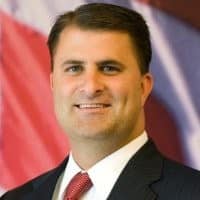Past performance is no guarantee of future results.
But performance is one of the metrics investors are using when choosing their exchange-traded funds (ETFs) – and so is cost, according to a new survey from Brown Brothers Harriman and ETF.com. The new insights are in “Shining Through: Global Investors Appear Confident in Multi-Faceted Use of ETFs,” which the two firms co-authored for the sixth time.
The survey polled 300 institutional investors (30%), financial advisers (50%), and fund managers (20%) from around the world to identify emerging trends in the ETF market. Survey responses identify key trends, highlight changing sentiment, and explore areas of innovation in the dynamic ETF marketplace. This year, BBH combined what was previously a regional breakdown into a single global survey of ETF investors in the United States, Europe, and Greater China.
The results help to illustrate where global consensus exists, while also showcasing some of the nuances in regional investor outlook and product appetite, according to BBH.
Some highlights of the global survey include with commentary from Shawn McNinch, Global ETF Product and Sales Head at BBH, who spoke with Traders Magazine.
- For the first time, investors are giving historic returns equal consideration to cost. Past performance and expense ratio (cost) were cited as the two most important factors for ETF selection.
“These findings dispel the widespread notion that ETF investors are singularly focused on cost. That’s not to say cost isn’t important – it remains top of mind for investors. But for professional investors, historical performance and ETF issuer carry considerable weight, too. The heightened investor focus on performance arrives during a market cycle that has been anything but calm. It appears many investors are selecting ETFs that are seeking to outperform index benchmarks or provide shelter from adverse market events.”
- Smart beta ETFs are catching assets from mutual funds: Nearly 30% of respondents said they purchased a smart beta ETF to replace an actively-managed mutual fund.
““There are many benefits to ETFs, but versatility may be the crowning attribute. This is particularly true of smart beta ETFs as they are not generally thought of as defensive products. But it appears many professional investors are finding factor-based approaches, which can help diversify and produce returns uncorrelated to the market that can help dampen some of the market noise produced by volatility.”
- Many investors are using smart beta to weather potential storms: Most (70%) of smart beta ETF users are searching for risk mitigation or volatility control, suggesting some may be positioning portfolios for a turbulent year in 2019.
- Global holdings in ETFs set to rise: 61% of global respondents plan to increase their ETF allocation within their portfolios in the next 12 months.
“Nearly all investors have a “rule of thumb’’ for a new ETF before investing, however, 40% globally stated they are willing to buy a new ETF with less than $24 million AUM. The global ETF market has matured significantly in the past several years. Investors are using more nuanced products, deploying ETFs beyond purely passive strategies, and appear to be comfortable investing in newer products that often have low AUM.”
- And there’s no sign of slowing down: Across all regions, respondents have increased their allocation to ETFs: 80% of investors surveyed in Greater China have more than 10% of their AUM in ETFs, compared to 73% in Europe and 79% in the US.
“We are seeing global ETF investors giving historic returns equal consideration to cost when selecting an ETF. That’s in stark contrast to last year when investors in the US and Europe stated cost was the top factor,” McNinch continued. “While much has been said about the low-cost nature of ETFs, our survey finds that professional investors are looking beyond the lowest-cost products and seeing tactical vehicles like smart beta and active ETFs as ways to bolster returns or mitigate risk, especially in periods of heightened volatility.”
“We’re 25 years into the ETF revolution, and investors are clearly becoming more sophisticated in their use of ETFs,” said Dave Nadig, Managing Director of ETF.com. “Whether it’s Smart Beta, active management or just a willingness to use brand new products, it’s clear this is a robust and maturing market.”
The report noted that in a sign that the ETF market will continue to grow, the majority of respondents (61%) plan to increase their ETF investments in the next 12 months, while 26% plan to keep their ETF usage the same. Comparing ETF investment in Greater China with global markets may present the greatest opportunity for growth, with 63% of investors expecting to increase their ETF allocations over the next year, up from 56% last year. In addition, given the volatility experienced in global markets in 2018, it is a positive sign that shareholders may view ETFs as viable tools to position portfolios for market fluctuations.
One question the survey posed was, “As a rule of thumb, what is the minimum AUM for a new ETF before you will invest?” While nearly all investors have a “rule of thumb’’ for a new ETF before investing, 40% globally stated they are willing to buy a new ETF with less than $24 million AUM. Given the nuances with ETF seeding and recent trends of larger managers self-seeding new ETFs (thereby underscoring commitment to their product set), and the ability to trade intra-day, perhaps investors are more willing to take on the risk of a newly launched ETF with lower AUM.
“In Greater China, nearly half of respondents would invest in a new ETF that has $24 million or less AUM. Given this region is the more nascent of the three markets, there may be a higher comfort level with smaller products, as many investors are accustomed to investing in new listings,” the survey added.
Furthermore, the top ETF strategies respondents most wanted to see listed in their local market are active, smart beta, core index, and ESG.
In Greater China, smart beta and core index are the most important, while active is the most important in Europe and the US. For the US and Europe, the survey suggests that the debate between active and passive isn’t necessarily a binary choice. Results indicate ETF investors still want active management; they just want to see it in a low-cost wrapper.
In Greater China, the results suggest that core building blocks are still in demand, with a heightened focus on accessing equity markets outside of their home market. Active ETFs are also new to the region: the vehicles were just approved in Hong Kong earlier this year but are currently not available in Taiwan or Mainland China.
“Generally, when looking across the regions, the more mature the market, the lower respondents ranked core index as a strategy they’re looking for,” the survey noted. “This is not surprising given passive core index offerings are already available by the largest ETF issuers.”



